Auto Added by WPeMatico
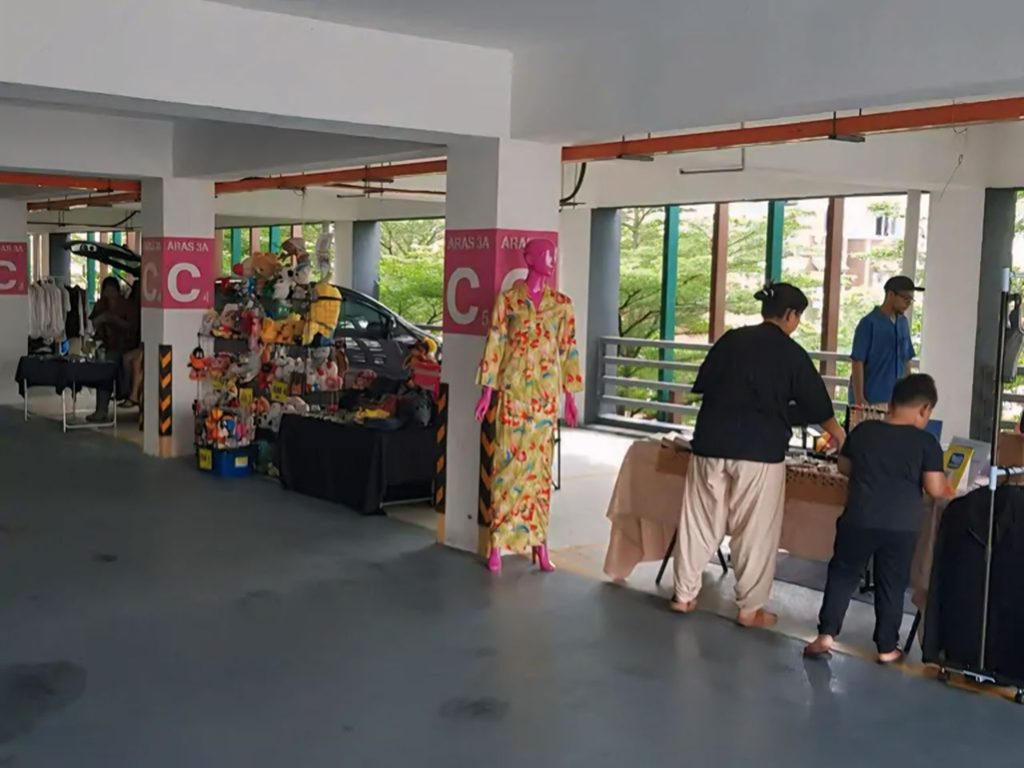
There’s no set price for vintage — sellers go with what they know, what they find online and what feels fair
by SHAUQI WAHAB & NURUL NAJMIN
THE world of vintage reselling is complicated as pricing is not always straightforward.
Without barcodes or standard retail tags, many sellers are left to determine the value of their items through careful research and experience.
For some, that means scouring online marketplaces to identify an average selling price — factoring in condition, rarity and recent demand.
Others, however, turn to the wisdom of niche collector communities and societies, where longtime enthusiasts informally shape the value of rare items through shared knowledge and discussions.
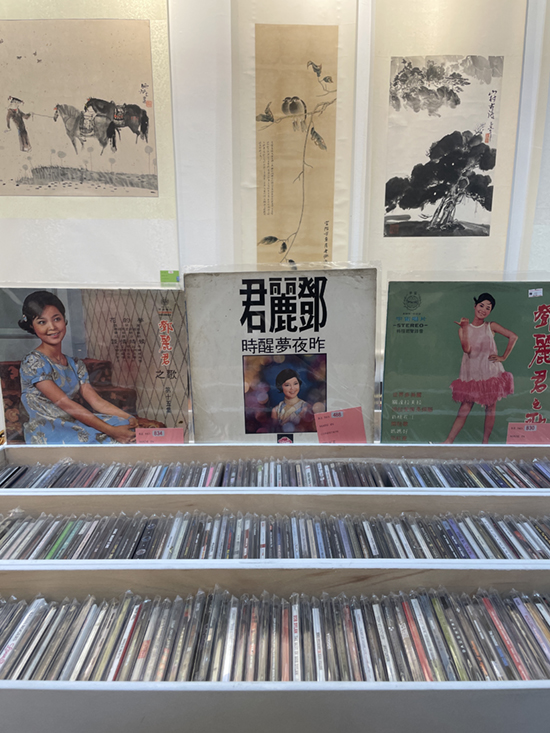
Collectors still ask for CDs and vinyls, with prices shaped by title, label and momentary demand
Passion Comes First
Whether it is a painting from a forgotten era or a limited-run vinyl, the price tag often reflects a mix of digital research and community insight — both driven by passion rather than profit alone.
Norhisham Amri, 45, a former toolmaker in the oil and gas (O&G) sector, turned to business after losing his job and has been running his venture for over 13 years.
He joined the local reselling scene at the SS15, Subang Jaya, Selangor car boot sale about a year ago, focusing on watches, a longtime personal passion.
“I have always been interested in watches, so it made sense to start there,” he told The Malaysian Reserve (TMR).
Besides selling his own collection, Norhisham also helps others sell their items, using online market rates to guide pricing.
Through his platform “Saudagar Jam” on Facebook Marketplace, he expanded his business reach to a wider online audience.
He said understanding capital management, profits and losses is crucial to sustaining the business, especially during slower periods.
“Sometimes the business is good, sometimes people do not buy and that is normal,” he said.
Norhisham described his work environment as comfortable and flexible, helping him maintain a healthy balance between work and personal life.
He advised newcomers to sell products they are passionate about, as it makes it easier to market and sustain the business in the long run.
“Having the right support system is important because business requires resilience,” he said, stressing that official business registration, declaring earnings and securing insurance are key steps.
Looking ahead, Norhisham hopes to mentor others and help at least 10 people build steady incomes through entrepreneurship.
“Find a friend who supports you, not one who pulls you down,” he said, highlighting the importance of patience, mindset and positive networks in achieving success.
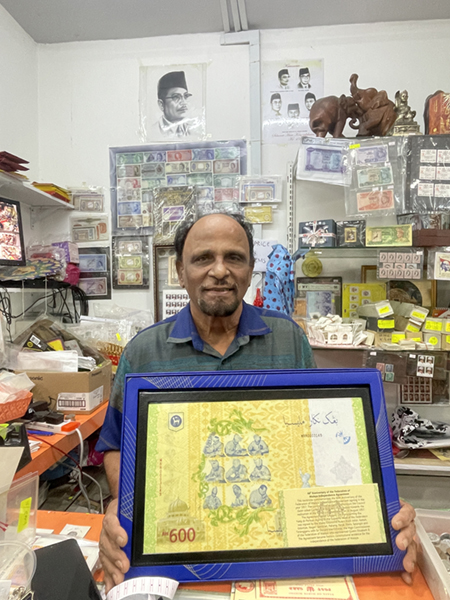
With decades of catalogues in hand, Govinder tracks toy releases down to the print run
Meanwhile in Amcorp Mall, Petaling Jaya, Selangor veteran collector Govinder Samy has built a reputation among Malaysia’s numismatic and philatelic circles.
With over 50 years of experience, he continues to deal in coins, banknotes and stamps — backed by deep knowledge from global networks and catalogues.
“I have been doing this for more than 50 years. I have travelled to about 30 countries for world exhibitions,” he shared with TMR.
Unlike casual sellers, he said the stamp and bank notes collection industry does not price his items arbitrarily. Instead, he and his peers rely heavily on updated collector catalogues — released every one or two years.
The book contains document market values, issue quantities and historical details of rare items.
One of the books is the 24th edition of Malaysia Singapore-Brunei Coin & Paper Money catalogue.
“These catalogues are very important as they guide you on things such as when it was issued, how many were printed and the value range,” he explained.
In addition to the printed guides, Govinder regularly engages with the Philatelic Society of Malaysia.
There, the members meet, trade and attend auctions — further sharpening their grasp of trends and valuation.
Though the digital age has eroded public interest, he still sees demand among committed collectors.
“Stamp collectors are getting fewer, maybe because of a lack of promotion. Now everything is on the phone,” he said.
Despite the current slow demand, he insisted that the industry is still going strong.
For Govinder, the value of each item lies not only in currency, but in history — and in the global community that keeps it alive.
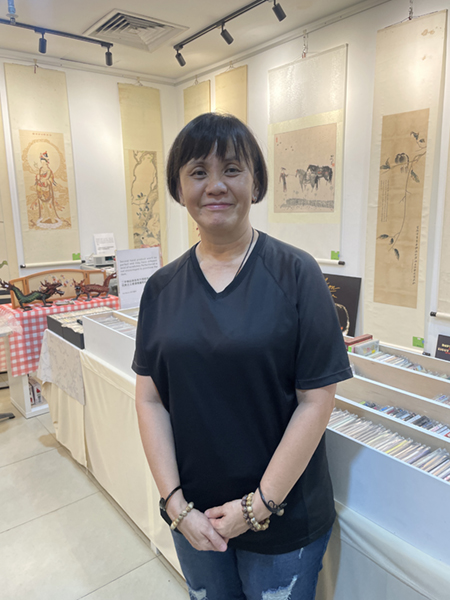
For Chew, Google is just the starting point — condition and buyer interest help seal the deal
Google, Social Media Become Guide for Vintage Pricing
Some sellers look to fellow resellers — especially those with long-standing reputations — as a guide to determine the value of collectibles via Internet search engines or by spying through their competitors’ pricing range.
In a shop selling vintage music CDs, cassettes and vinyls at the ground floor of Amcorp Mall, help now comes from Chew Kai Mei, who assists her uncle on weekends.
What sets this shop apart is not just its collection, but the pricing approach — deeply rooted in collector knowledge and online research.
“I went through the Google search so we could see how much it is in the market and go for the average price,” she explained to TMR.
While market listings provide a rough guide, the final pricing often depends on condition, demand and customer engagement.
Flexibility is part of the charm as selling things such as vintage paintings are not easy.
The shop regularly adjusts prices based on customer intent — especially for younger buyers or dedicated collectors.
“If the market is RM100, we will definitely not follow it and maybe go for standard RM50. So if the customer bargains, then we still give a cheaper price because sometimes we really just want to let go of some of the stuff,” she added.
Behind every transaction is a simple philosophy — vintage items are meant to be appreciated, not hoarded.
From collectors looking to complete a set to curious newcomers, the shop invites all to explore and negotiate.
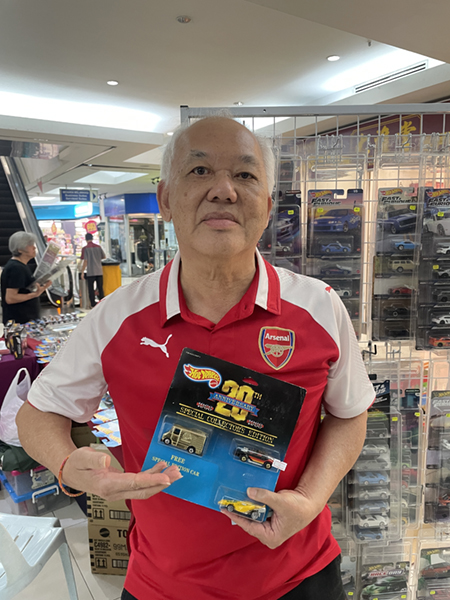
The rarest Hot Wheels, especially Japanese models, tend to move fastest, says Chia
Hot Wheels collector and reseller Chia Jun Hock has been in the scene for over two decades. Starting his journey in 2002, he now operates both at Amcorp Mall and from his shop on the first floor of Summit USJ, Subang Jaya, Selangor.
“Back then, I bought Hot Wheels from supermarkets, the Internet and even from other collectors. I would buy, sell, collect and trade,” he said.
It was only after learning from a fellow collector named Wahab that he realised the real investment potential of Hot Wheels. So, he started buying in bulk, thinking this could be his business after retirement.
When asked how he determines the value of each car, Chia likens it to real-world automotive economics.
“Cheaper models are usually fantasy cars — designs that do not exist on real roads, mainly for children.
“But replicas of real cars, especially Japanese models, are in high demand in Malaysia, which drives up their value,” he elaborated.
He added that Hot Wheels come in different tiers, from basic mainlines to premium models, and even exclusive offerings such as those from the Red Line Club (RLC), which is accessible only via membership in the US.
“Not all RLC cars are equally in demand, as it still depends on the model — and Japanese cars still top the list,” he said.
As for pricing, Chia noted that there is no standardised guide. It is all about willing buyer, willing seller where one seller might offer a custom model for RM15, another for RM100.
He also said it depends on the seller’s markup and how badly the buyer wants it. His approach includes a personal touch — sometimes bargaining, sometimes lowering prices for regulars or passionate collectors.
“I have my own group of loyal customers, so even if my price is a bit higher, they still buy from me. Whenever I get new stock, I share it in our WhatsApp groups,” he said.
Chia manages several groups based on collector preferences — Japanese cars, Mercedes, Red Line Club editions and more — ensuring each niche receives tailored updates.
Looking ahead, he is optimistic about the future of the Hot Wheels community because the manufacturer Mattel Inc releases new models every month and rarely repeats designs which keeps the value strong.
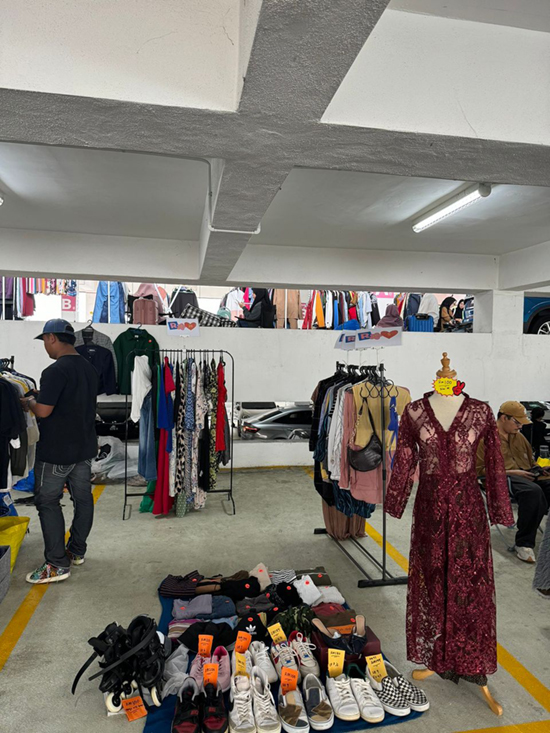
Many sellers go by memory, online listings and what others are charging nearby
A reseller at a car boot sale market in SS15, Muhammad Ihsan Sopian, 26, started his journey into reselling with a simple idea — to buy and sell old items he had personally collected such as bags, clothes and memorabilia of Gundam, a Japanese science fiction.
He explained that as his colle tion grew, he began selling older pieces to make room for new ones.
He admitted that he was drawn into the reselling community initially not because of passion, but because of rising market trends, noting that although he started with older series, demand for newer collections quickly caught his attention.
Ihsan, who began reselling in September last year, explained that he sets prices based on the item’s condition and the affordability for buyers.
“If a bag is still in good condition and the handle remains secured, then it is easier to sell,” he said.
He shared an example where he priced one bag at RM70 and another at RM60 but was willing to bundle them together for RM40 to make a sale, stressing the importance of negotiation.
When it comes to profit and loss, he said personal preference often plays a role, as he tends to pick items he personally likes.
Ihsan also observed that the reselling community is growing fast, with hobby-based events such as Gundam exhibitions creating new opportunities for sellers.
Although he sells online through the Carousell platform, he prefers face-to-face interactions such as at shopping mall pop-ups, where customers can view the products in person.
Ihsan first got involved in the reselling scene through a Carousell event, where the vibrant atmosphere motivated him to take reselling more seriously.
Building strong networks with other resellers, he said, is key to growing stock availability and reaching more customers.
Taking part in weekend markets, he added, not only helps clear stock but also helps prepare for future sales events.
Over time, Ihsan expanded his collections beyond Gundam models to include clothing and memorabilia to appeal to niche collectors.
Collectors, he said, often look for rare or customised items and prices can vary widely depending on how rare and in demand the item is.
He added that a neat and organised display is important, as it makes it easier for customers to appreciate the products. From seasoned collectors like Govinder to newcomers like Ihsan, each seller brings a unique approach rooted in experience, research and love for
the items they trade. As the community grows, the world of vintage reselling is more than a business; it is a culture built on passion and relationships.
- This article first appeared in The Malaysian Reserve weekly print edition
RELATED ARTICLES
The post Behind the price tags of vintage reselling appeared first on The Malaysian Reserve.
